Lily Flowers are a classic garden favorite for a reason. They have large blooms, a pleasant fragrance, and come in a variety of colors which makes them a favorite to use in bouquets and arrangements.

Lily flowers are easy to care for, and they will return every year as long as you know how to take proper care of them.
How to Care For Lily Flowers
Light
Lilies need lots of sun. They do best in full sunlight and thrive with about 6-8 hours of direct sun a day. They can tolerate partial shade.
Watering
Lily flowers require about an inch of water per week. Thorough watering is needed at the time of planting, but after that, these flowers do not need frequent watering.
You can freely water your lilies daily if their soil drains well. If you have potted lilies, ensure their drip tray doesn’t keep the soil wet, or their roots will rot.
Never let the soil of your lilies dry out, even in winter when they are not in bloom.
Soil
Lilies like a rich soil and do best when planted in well-drained soil. These flowers can tolerate different types of soil, but the pH should be slightly acidic to neutral. Some species of lilies are lime-tolerant and even prefer alkaline soil.
Temperature
Lilies can tolerate a broad range of temperatures. They prefer a night temperature of 58º-65ºF and a day temperature of 68-75ºF, but they can essentially thrive in most temperatures as long as it is not extremes of hot and cold. Keep in mind they do enjoy if their roots are colder, so mulch around the base of the lily if you live in a hot climate.
Humidity
Lilies enjoy high humidity, although it is not always needed. Misting the leaves once a day should allow your lily to thrive, or even placing the pot onto a tray with gravel and a little water.
Fertilizing
You only have to fertilize your lilies once a month. To keep your lily flowers in their best condition, it is recommended to start fertilizing by using a slow-release fertilizer in the spring, at the beginning of their growing season, and continue until autumn.
Tips for Growing Lily Flowers
- During spring and summer, water freely and often, but never let the soil become too wet to cause root rot.
- Give your lily a good misting once a day, add a humidifier close by, or set the pot on a tray full of gravel and water to allow the humidity levels to rise.
- If your lily is getting direct sun, mulch around the plant to keep its roots cool.
When to Plant
Plant your lilies after the last frost has passed to avoid the bulbs deforming. Ensure the temperatures do not fall below 55ºF in the day or night before planting.
When to Cut
Cut off any flowers once they start to wilt to avoid the plant trying to use its energy to form seeds. Only cut leaves that are completely dry and brown to ensure the plant has used all its energy to form roots for the winter.
20 Types of Lilies Flowers
Wild Lilies
1. Martagon Lily

Lilium Martagon is a wild lily that enjoys a little bit of shade. It is a lily that produces a lot of flowers and tolerates some lime in the soil. Gardenia has some extra tips on growing this easygoing Lily.
2. Canada Lily

The Lilium canadense is also known as the wild yellow lily and is not ideal for beginners since this lily can be a little bit fussy about its growing conditions.
Gardening Know How has a good overview to read up on about the Canada Lily.
3. Leopard Lily

If left to grow wild, these lilies grow up to 6 feet tall and are often fragrant. The Lilium Pardilinum
can tolerate some partial shade, according to Wildflower.
4. Tiger Lily

Often mistaken for the Leopard Lily, the Tiger Lily, Lilium Lancifolium is much easier to propagate and care for. They produce a lot of blooms and are disease resistant. You can read up on how to care for them at Gardenia.
5. Madonna Lily

The Lilium Candidum demands full sun in order to produce the iconic big white blooms it’s known for. They grow fairly tall and require a moderate amount of attention, as mentioned on Candide.
6. Oriental Lily

Originally from Japan, the Lilium Speciosum is a striking flower that is often white and pink. It does not tolerate alkaline soil, so consider potting them up into its own special blend of soil. They bloom in the late summer and are beloved by bees and butterflies, as mentioned at Gardenia.
Dwarf Asiatic
7. Orange Pixie Lily

Growing at only about 8 inches tall, the Lilium ‘Orange Pixie’ is ideal for growing in containers and used as cut flowers. Gardener’s World notes that this lily is not fragrant.
8. Denia Pixie Lily

This subtle lily that grows about 16 inches tall is a mid-summer blooming flower. According to Beechwood Gardens, the Lilium ‘Denia Pixie’ is a fairly easy lily to grow in your garden.
Trumpet Hybrids
9. Trumpet Lily

The trumpet lily, Lilium ‘African Queen’, shows off its bold and large orange blooms in your garden. Gardenia notes that this trumpet hybrid has some fragrant blooms and is well suited for most gardens.
10. Lilium ‘Golden Splendor’
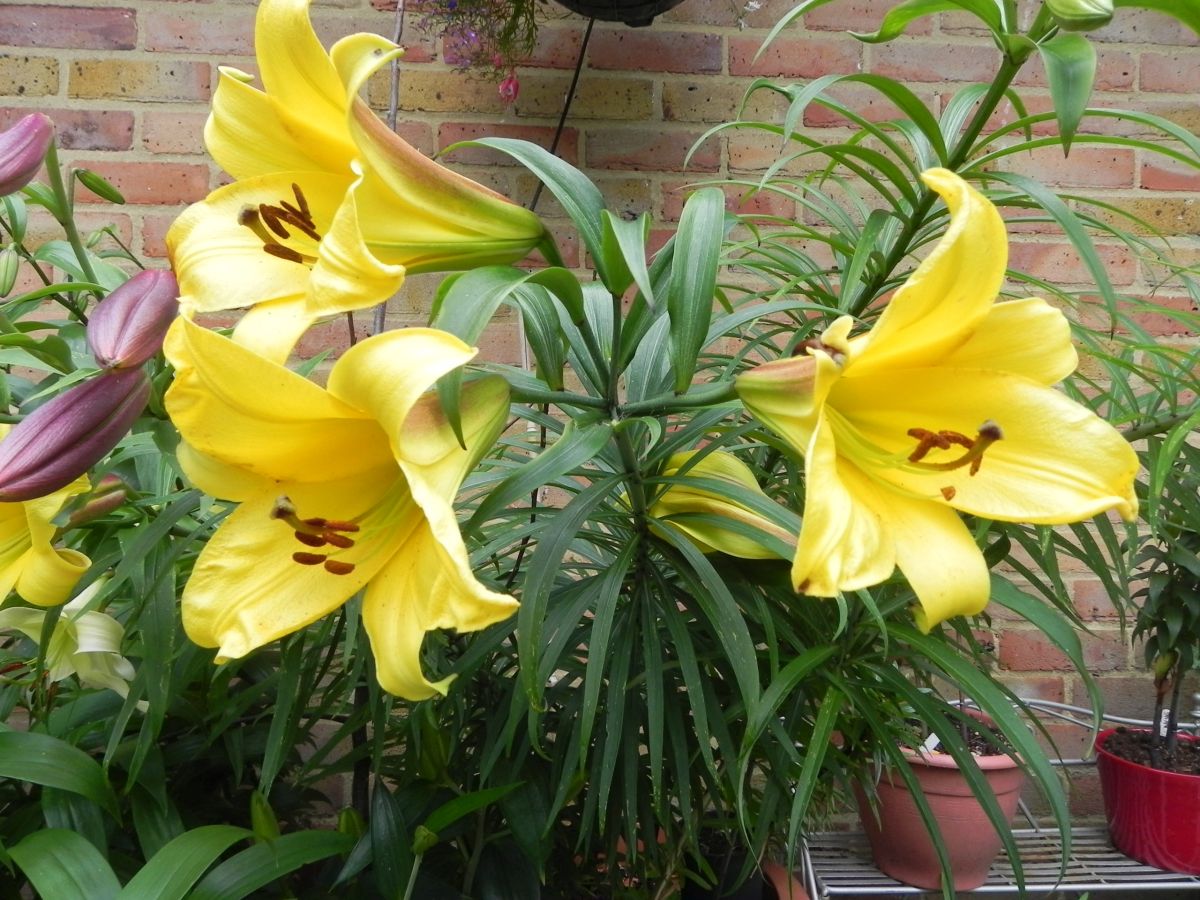
With no common name, the botanical name of this lily is fitting. It produces massive bright yellow blooms in the late summer to early autumn, as mentioned by Candide.
11. Lilium ‘Pink Perfection’
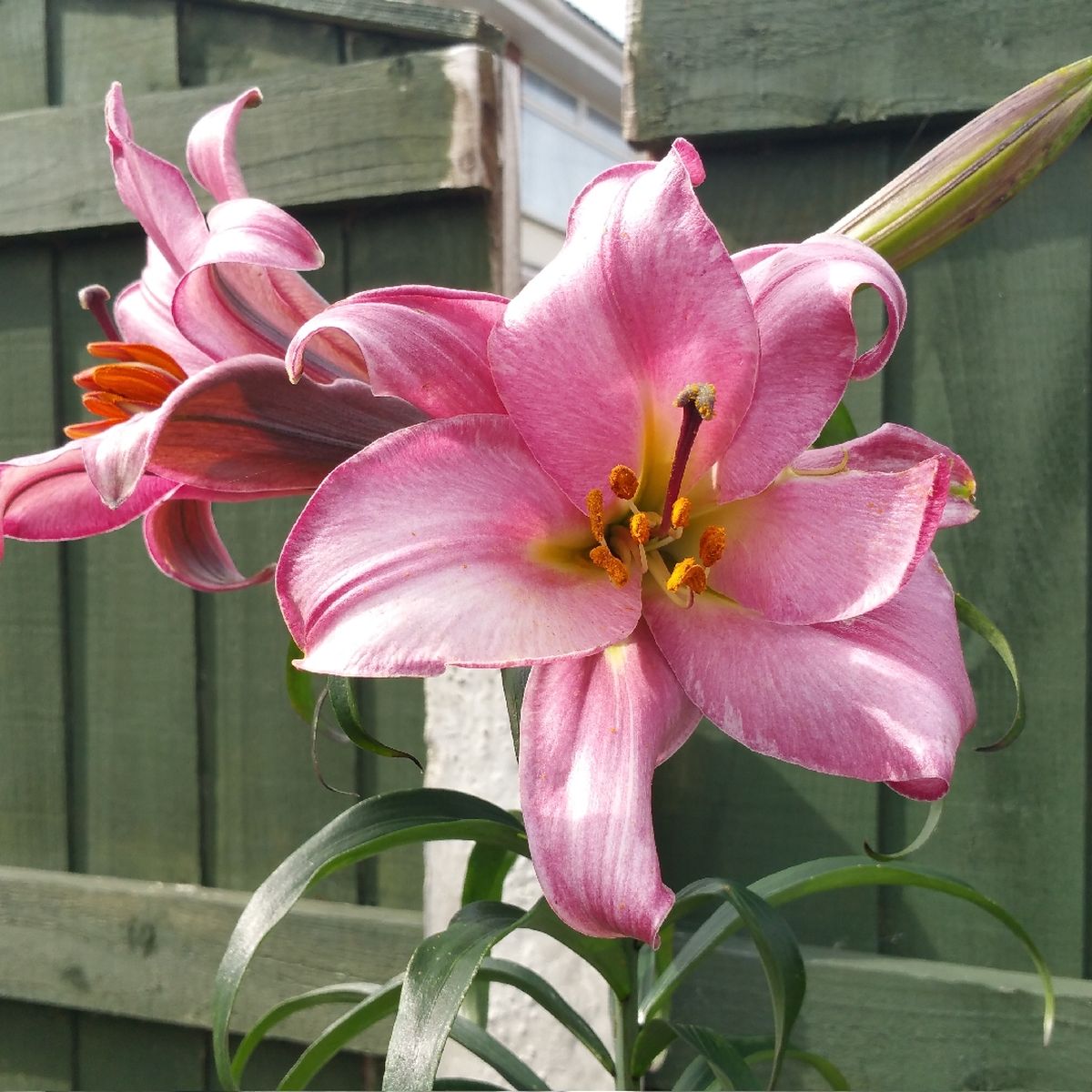
Missouri Botanical Gardens has an in-depth overview of the Lilium ‘Pink Perfection’. The blooms of this lily can reach up to 10 inches in diameter, making it a showpiece in the garden.
12. Lily ‘Bright Star’
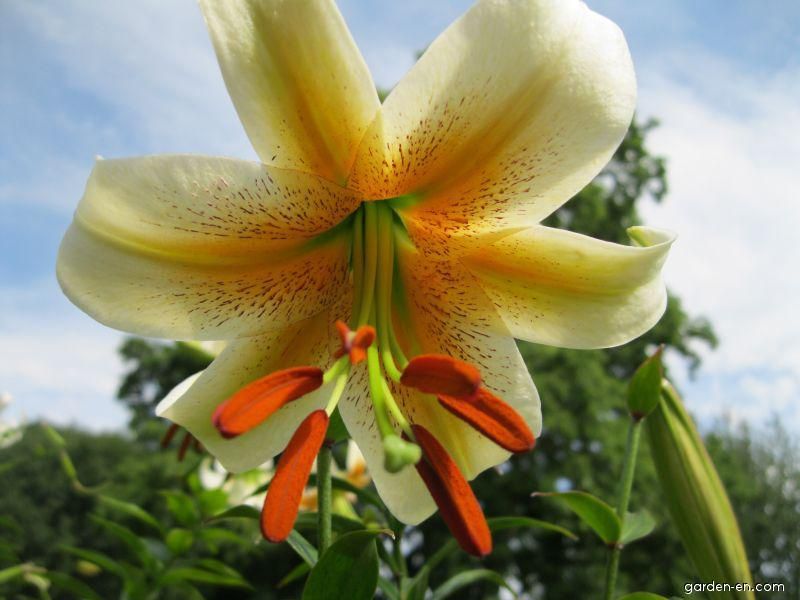
The shape of the Lilium ‘Bright Star’ is somewhat flatter than other trumpet lilies since it is a crossbreed of two other lilies. Its petals are creamy-white with a splash of orange, making them look like stars. Read more about them at Garden Tags.
13. Easter Lily

The Lilium Longiflorum ‘American White’ is a stunning lily with pure white petals. Each stem has about 3-4 flowers and has a sweet fragrance. Gardenia has more to read on the Easter Lily.
Oriental Hybrids
14. Oriental Lily Acapulco

This strikingly pink lily is ideal for bouquets since it is large and very fragrant. The Lilium ‘Acapulco’ flowers in mid to late-summer, and you can read more about them at Garden Tags.
15. Lilium Casa Blanca

Lilium Casa Blanca produces large white blooms that are a treat to the eyes and nose. Remember, this lily, along with many others, are toxic to cats, as seen on Gardenia.
16. Lilium ‘Dizzy’
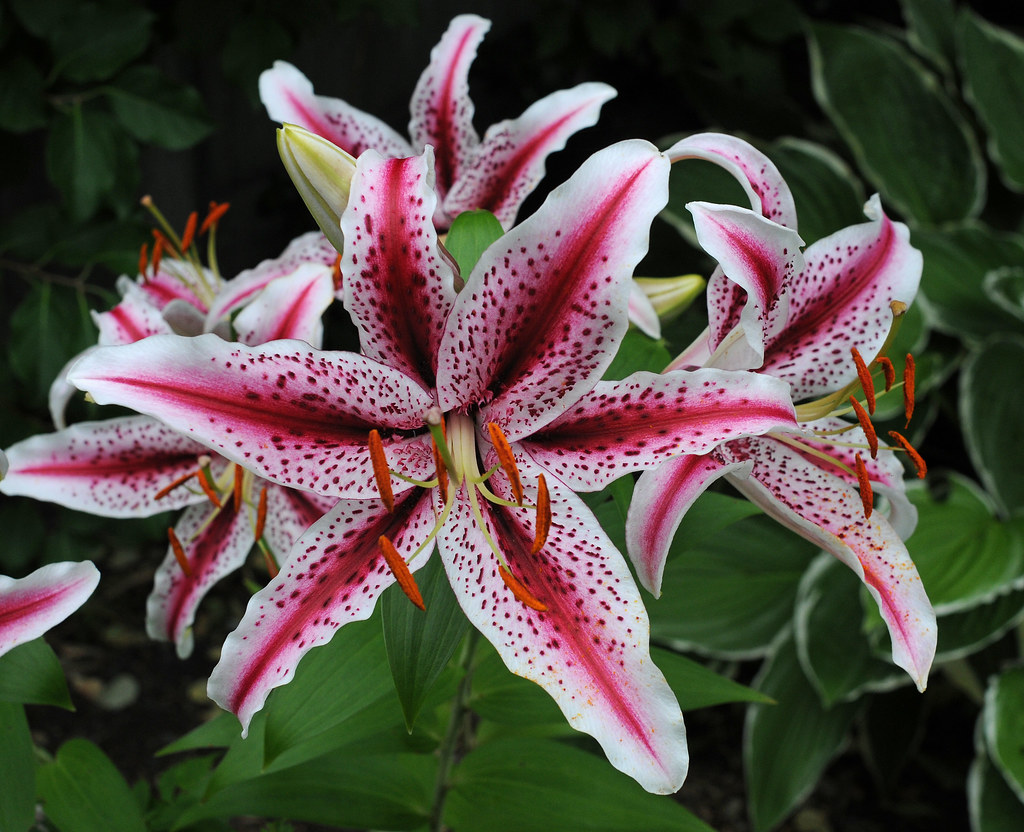
The Lilium ‘Dizzy’ grows about 3-4 feet tall, with a potent and pleasant fragrance. The edges of this lily’s petals are slightly ruffled, adding to the charm. Read more at Shoot Gardening.
17. Lilium ‘Tom Pouce’

Lilium ‘Tom Pouce’ grows well in almost any well-draining soil. It is on the paler end of the spectrum but has a striking stripe on each petal. Perennials have a brief characteristic overview.
LA Hybrid
18. Lilium ‘Forza Red’
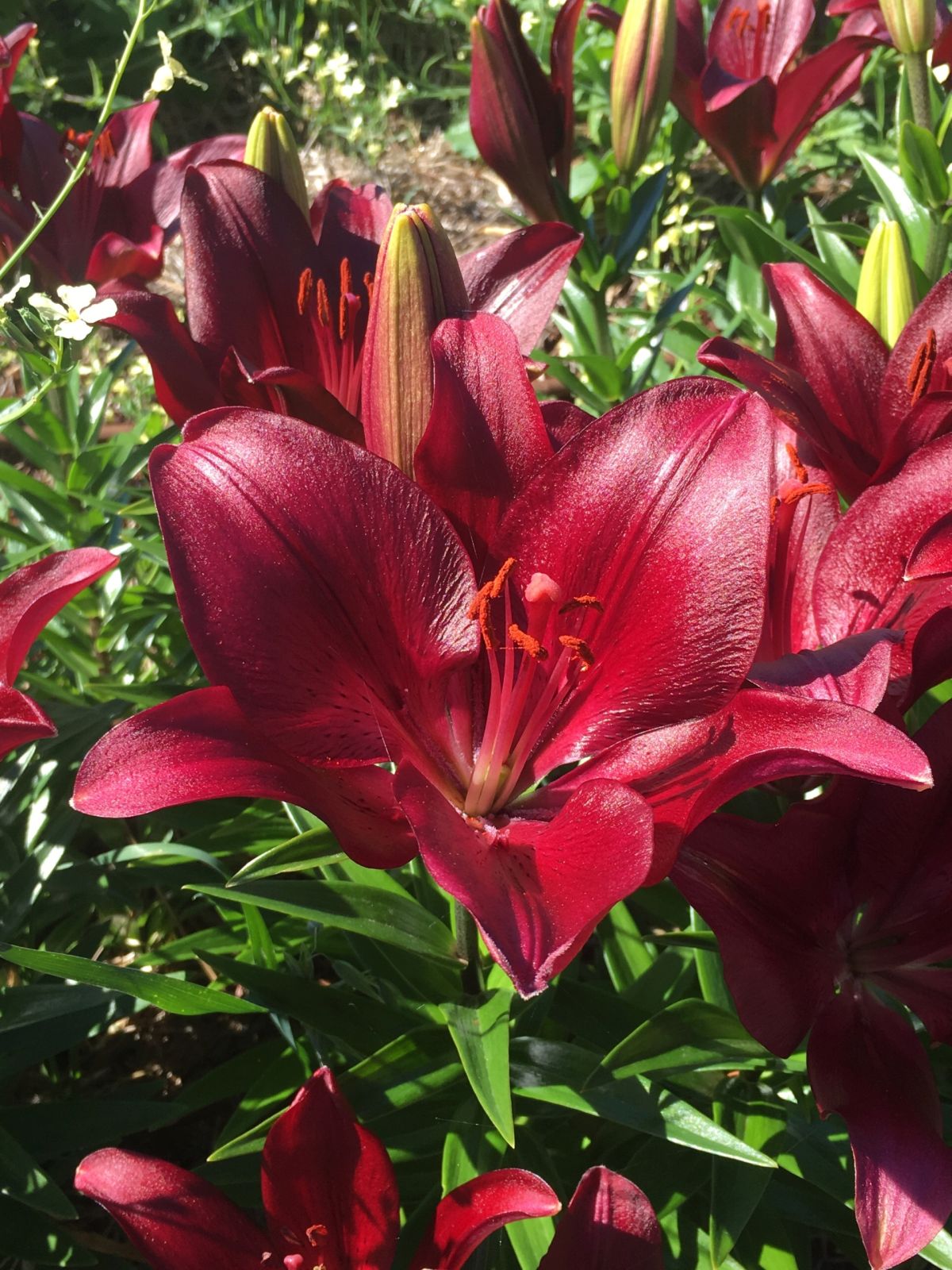
The Lilium ‘Forza Red’ is a favorite amongst florists since it has deep maroon blooms with a sweet fragrance, ideal for bouquets. You can see an overview of these lilies in Plants Database.
19. Lilium ‘Heartstrings’
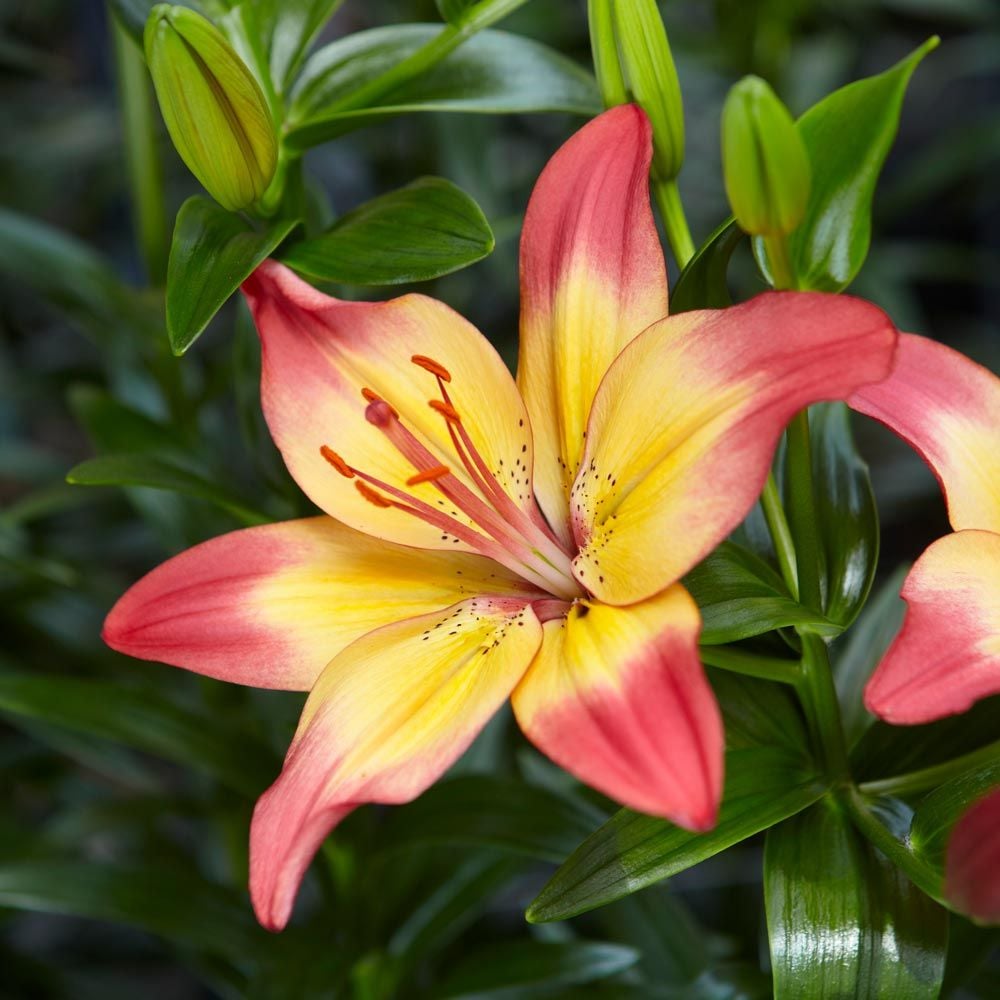
Lilium ‘Heartstrings’ are incredibly beautiful flowers with a soft fade from pink to orange, making it a guaranteed show-stopper in your garden. It requires full sun, according to Plants Database.
20. Lilium ‘Summer Sky’

North Coast Perennials mention that the Lilium ‘Summer Sky’ is due to a cross breed including the Easter Lily, which is likely why their blooms are exceptionally large and fragrant.
How to Tell the Difference Between Daylilies and Lilies
Step 1. Roots
First, if possible, check the plant’s roots. A true lily will grow from a bulb, whereas a daylily will have tuberous roots.
Step 2. Stems
The next step to check for is the stems. If a plant seems to have only one stem, it is a true lily. A daylily will have multiple stems per plant.
Step 3. Bloom Time
A daylily, as its name implies, will only bloom for a day, whereas a true lily will bloom for at least a week or more.
Step 4. Leaves
Lastly, the leaves will be the easiest sign of a true lily or a daylily. A daylily has thin strap-like leaves that grow at the plant’s crown at a soil level. A true lily will have leaves all the way up the stem.
FAQ
Yes, lilies are perennials and will grow back every year if the growing conditions are favorable.
Cut lily flowers can last up to two weeks. As for the flower on the lily plant, its lifespan depends on the condition of your garden, soil, and climate.
Yes, lilies are mildly toxic to humans when ingested. In addition, the pollen of the lily flower is highly toxic to cats.
Toxic Effects of Lily Plants
In humans, diarrhea, loss of appetite, vomiting, drowsiness, and weakness are all symptoms one may experience from ingesting any part of the lily plant.
The same symptoms may be experienced in animals. In the case of cats, kidney failure may also occur.
After the lily flower has bloomed, you should cut off the flowers. Doing so encourages the plant to spend time growing roots rather than seeds, ensuring a strong plant for the next season.
Lillies commonly symbolize devotion and purity. Although, different cultures may have distinct meanings for the lily. They also often represent motherhood and fertility in a lot of cultures.
Lily flowers are one of the most fragrant and big blooms you can find in your garden. Since they don’t require too much attention and care than other flowers, these blooms are more than worth the minimal effort. Make sure you plant different species of lilies to bloom throughout the seasons for a fragrant garden year-round.





